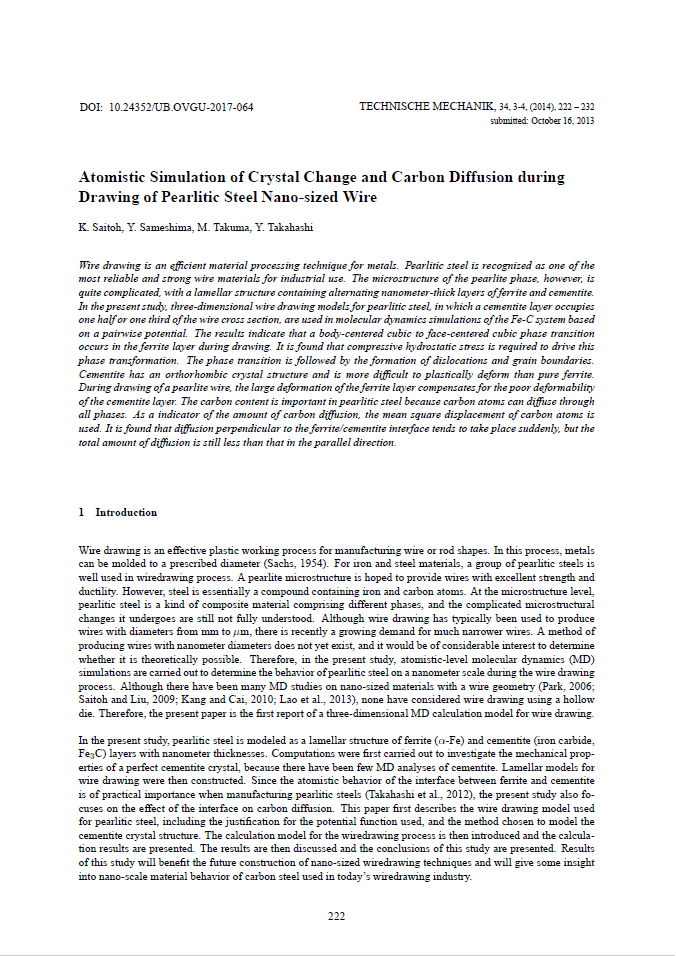Atomistic Simulation of Crystal Change and Carbon Diffusion during Drawing of Pearlitic Steel Nano-sizedWire
DOI:
https://doi.org/10.24352/UB.OVGU-2017-064Abstract
Wire drawing is an efficient material processing technique for metals. Pearlitic steel is recognized as one of the most reliable and strong wire materials for industrial use. The microstructure of the pearlite phase, however, is quite complicated, with a lamellar structure containing alternating nanometer-thick layers of ferrite and cementite. In the present study, three-dimensional wire drawing models for pearlitic steel, in which a cementite layer occupies one half or one third of the wire cross section, are used in molecular dynamics simulations of the Fe-C system based on a pairwise potential. The results indicate that a body-centered cubic to face-centered cubic phase transition occurs in the ferrite layer during drawing. It is found that compressive hydrostatic stress is required to drive this phase transformation. The phase transition is followed by the formation of dislocations and grain boundaries. Cementite has an orthorhombic crystal structure and is more difficult to plastically deform than pure ferrite. During drawing of a pearlite wire, the large deformation of the ferrite layer compensates for the poor deformability of the cementite layer. The carbon content is important in pearlitic steel because carbon atoms can diffuse through all phases. As a indicator of the amount of carbon diffusion, the mean square displacement of carbon atoms is used. It is found that diffusion perpendicular to the ferrite/cementite interface tends to take place suddenly, but the total amount of diffusion is still less than that in the parallel direction.





